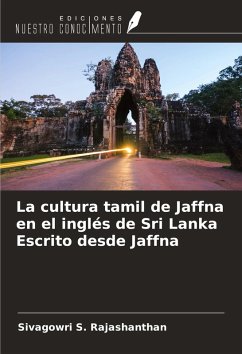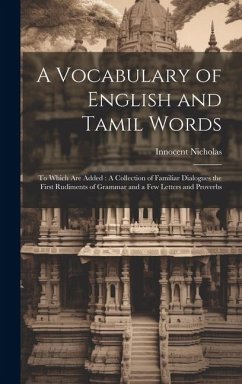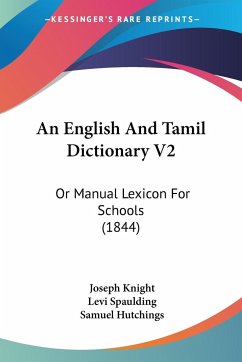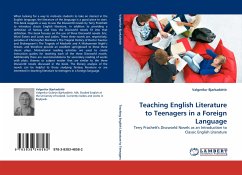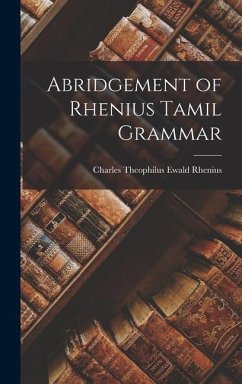
English Borrowings in Jaffna Tamil from 1993 to 2006
The use of English loan words in Jaffna Tamil
Versandkostenfrei!
Versandfertig in 1-2 Wochen
45,99 €
inkl. MwSt.

PAYBACK Punkte
23 °P sammeln!
This study deals with the language contact of two of the world¿s most famous languages and details of the resultant language change when words from English are borrowed into Tamil. The frequency of English loan words was found to have increased in Tamil in the past decade, particularly in the realms of technology and communication, culture and entertainment, and politics. The borrowings are spoken and understood by younger interlocutors and speakers. Socioeconomic, cultural, political, and geographical factors may make two languages co-exist and unavoidably the languages influence each other....
This study deals with the language contact of two of the world¿s most famous languages and details of the resultant language change when words from English are borrowed into Tamil. The frequency of English loan words was found to have increased in Tamil in the past decade, particularly in the realms of technology and communication, culture and entertainment, and politics. The borrowings are spoken and understood by younger interlocutors and speakers. Socioeconomic, cultural, political, and geographical factors may make two languages co-exist and unavoidably the languages influence each other. The word borrowed from one language into another is not returned, as it never goes out of the source language. Over the centuries, many languages were found to be the donor languages for Tamil, i.e. Sanskrit and Sinhala from the South Asian region and Portuguese, Dutch and English from Europe. It is apparent that people in Jaffna use English borrowings in day-to-day life spontaneously and the use of English borrowings has become part and parcel of their life.



